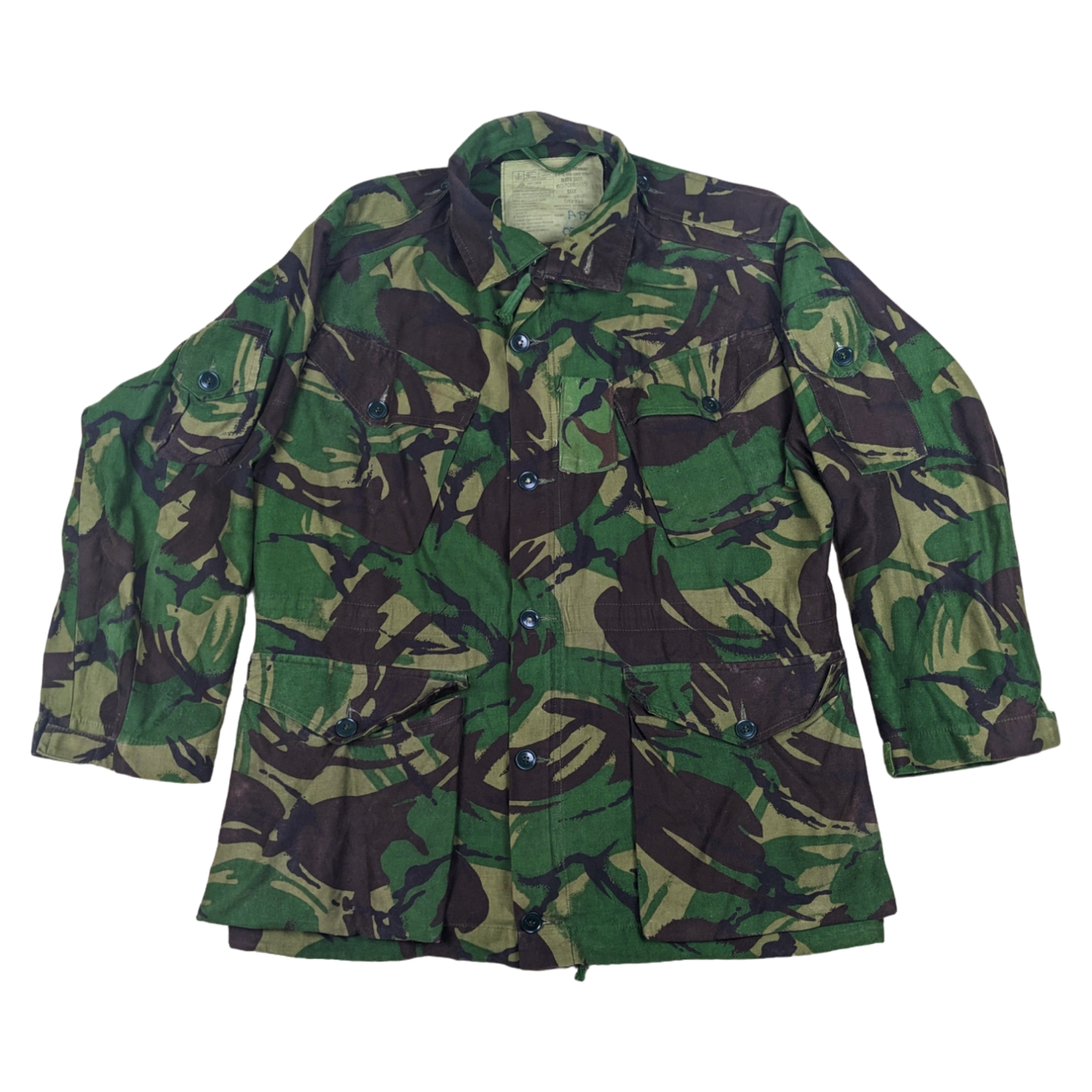British Army
British Army 90s Pattern Woodland DPM Camo Combat Smock
British Army 90s Pattern Woodland DPM Camo Combat Smock
Couldn't load pickup availability
At a glance -
- 100% Cotton Material
- Zipper & Button Closure
- 4 Large Button Torso Pockets, Internal Fishtail Pouch, Internal Chest Pocket & 1 Small Button Pocket on Each Sleeve
- Shoulder Epaulettes
- Adjustable Velcro Cuffs
- Waist & Hem Drawstring
- Iconic British Woodland DPM Camouflage Pattern
- Chest Size: 47" / Large Slim - Label states 104cm
- Sleeve Length: 22.5" / Short - Label states height around 170cm
- Collar to Hem: 31"
- Vintage Militaria / Early 1990s
- Genuine British Army Surplus
Grades -
- Grade 1.5 - Fantastic condition surplus with general signs of previous use. The last owner added a small patch to create an extra internal pouch. Internal fishtail buttons have been removed and instead sewn on to stay as a large back internal pocket. Unique use of field tailoring. Some markings in places.
Any questions please feel free to ask!
- - - - - - -
Vintage militaria from the early 90's. This British combat smock would've seen use during various UN peacekeeping missions as it was standard issue. This jacket comes in the last pattern before the modern made Soldier 95 series, which revolutionised the British army's uniform system with one standardised, effect garment. Still, this coat served many soldiers well and is made from a durable all cotton material.
It appears the previous owner added a keen hand at sewing and added an extra internal pouch. By default you'll find 4 spacious button pockets, 2 chest and 2 hip, as well as a handy little pocket on each sleeve. Internally there's a large "fishtail" pocket for storing soft goods like sleeping mats, clothing etc.
For utility you'll find the collar can be overturned and fastened shut in harsh conditions and each sleeve cuff is able to be velcro'd tight. There's a hem and waist drawstring so you can really help insulate yourself in cold windy weather.
The camouflage is of course the iconic woodland DPM pattern, a world renowned camo which still sees active use in 40+ countries.
- - - - - - -
Looking for more British Items? Click Below




